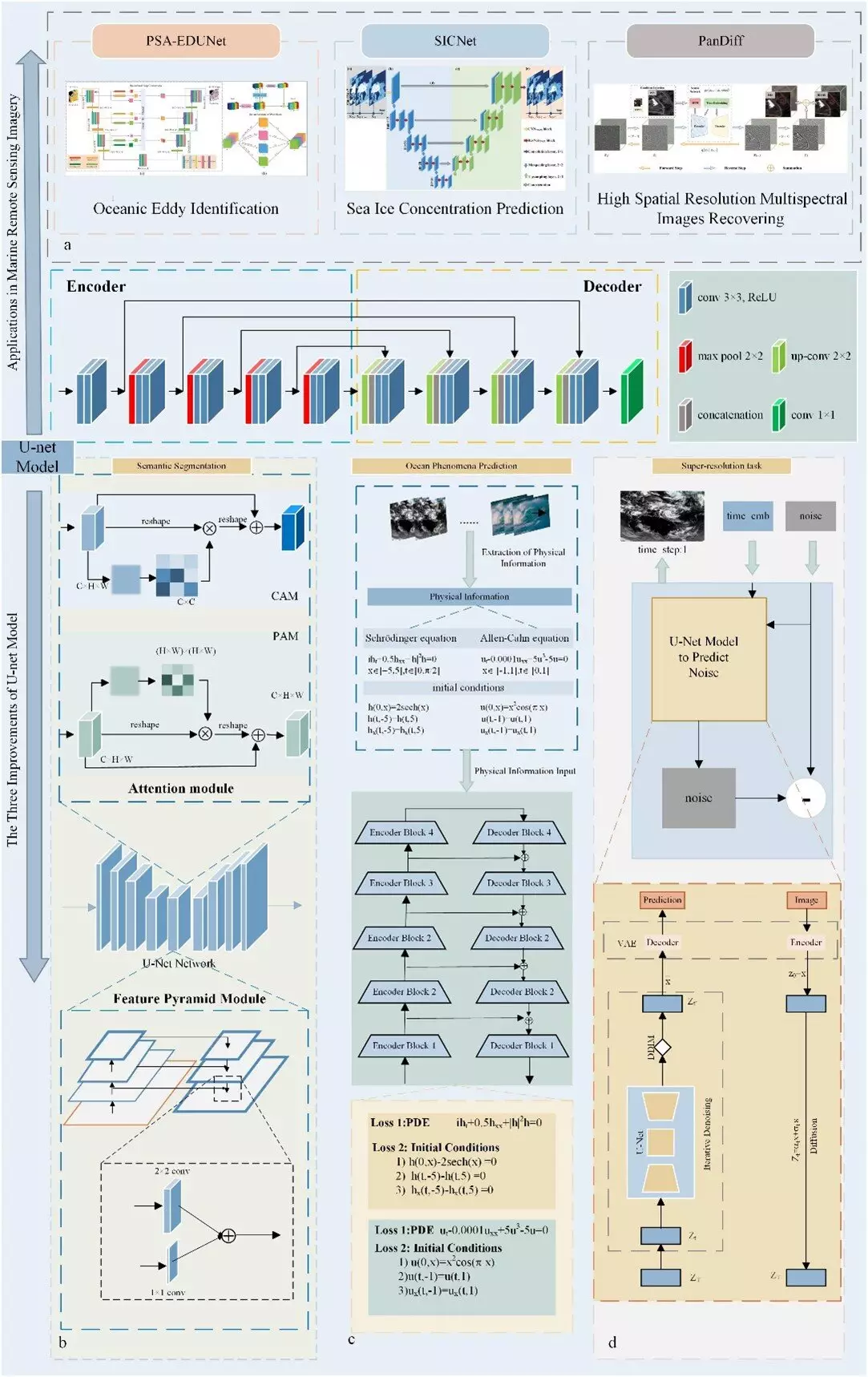The intersection of artificial intelligence and environmental scientific research has spawned transformative opportunities to analyze and monitor complex ecosystems. One of the most promising developments involves the U-Net model, a convolutional neural network originally tailored for medical imaging but now being reimagined for oceanographic applications. Despite its initial success in medical diagnostics, modifications to the U-Net architecture are crucial to fully exploit its potential for ocean remote sensing tasks. This article elaborates on the specific areas requiring enhancement, the existing capabilities of U-Net, and the promise it holds for future oceanographic explorations.
Originally developed for precise segmentation in medical images, U-Net has evolved into a model with broader applications. In the realm of ocean remote sensing, it is sought after for its ability to delineate objects and patterns within complex environments. Researchers have begun looking at how U-Net can support oceanographic endeavors, such as monitoring marine ecosystems and studying climate impact on ocean health. Despite its foundational strength, the current iteration of U-Net does not fully meet the nuanced demands of ocean researchers. Therefore, its successful application in this field requires a careful reevaluation and enhancement of its core functionalities.
As researchers delve into optimizing U-Net for oceanic applications, three critical areas emerge where improvements are needed: segmentation tasks, forecasting capabilities, and super-resolution tasks.
1. **Segmentation Tasks**: At the heart of U-Net’s function is its capability for pixel-wise categorization within images. For oceanography, this translates to the need to differentiate between various water types, ice structures, and other marine phenomena. Current practices still adhere to traditional segmentation methods, which often fall short when identifying small or subtle features. Integrating advanced techniques, such as attention mechanisms, could significantly enhance its performance by allowing the model to focus on spatial relationships and contextual cues within the image, thus refining its segmentation accuracy.
2. **Forecasting Capabilities**: The ability to predict future conditions based on current data is essential in oceanic research, particularly with variables such as sea ice extent or algal blooms. Success stories in this domain, like SIPNet, showcase how U-Net, alongside an encoder-decoder architecture, has yielded promising results. The SIPNet model, which processes extensive datasets over time, has shown that with the right structural modifications, U-Net can not only forecast future conditions but do so with remarkable precision. However, extending these capabilities to a variety of oceanic phenomena remains a significant hurdle that researchers are keen to overcome.
3. **Super-resolution Tasks**: Enhancing the quality of images is another crucial aspect. Many oceanographic datasets are marred by noise or low resolution, which can obscure vital aspects of the environment being studied. Researchers suggest employing diffusion models that can reduce image blurring and enhance image fidelity. By identifying relationships between high and low-resolution images, models like PanDiff can potentially enable U-Net to create clearer, more detailed representations of oceanic features, aiding in better assessments and interpretations of remote sensing data.
To maximize the potential of U-Net for oceanographic research, ongoing collaboration across disciplines is imperative. Marine scientists, data scientists, and AI experts must converge to refine U-Net’s architecture and enhance its capabilities. Moreover, exploring hybrid models that combine U-Net with other advanced neural network architectures may unveil new pathways to improved accuracy and efficiency in ocean remote sensing.
The overwhelming potential of U-Net’s structure, combined with its adaptability, positions it as a formidable tool for ocean research. Xiaofeng Li, a researcher associated with the U-Net adaptations for oceanography, highlights the model’s popularity due to its comprehensible architecture and excellent fitting capabilities. Thus, while U-Net has largely succeeded in diagnostic roles within healthcare, its unchecked potential for oceanographic applications heralds the need for continuous innovation and methodological enhancements.
The U-Net convolutional neural network is a promising candidate poised to revolutionize ocean remote sensing. As researchers optimize its architecture and address shortcomings in segmentation accuracy, forecasting methods, and super-resolution capabilities, the model is likely to serve as an invaluable asset in understanding complex marine ecosystems. The future of oceanographic research will undoubtedly benefit from the synergistic blend of artificial intelligence and environmental analysis, making this an exciting era for technology-driven exploration of our oceans.

